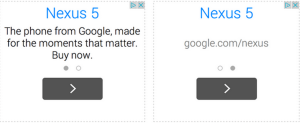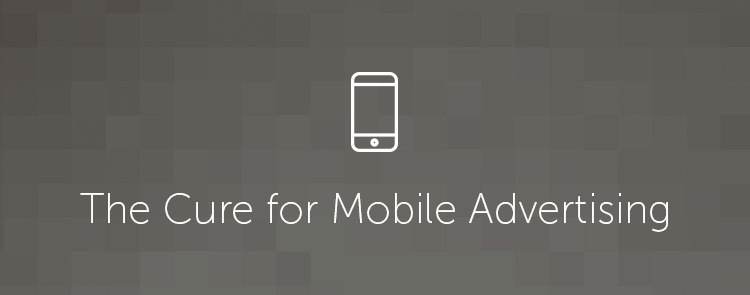Google is the second-largest US company by market value. Its been called the greatest company, the smartest, and the most innovative. Jimmy Wales the outspoken co-founder of Wikipedia said, “If it isn’t on Google, it doesn’t exist.”
In addition to being the leading search engine, the giant has made glasses into computers, driverless cars, and delivery drones. They are a clear pioneer in innovation. But Google has a problem. They have hit a wall when it comes to transferring their digital advertisements to mobile.
Google’s quarterly numbers cast a chilling spotlight on their their ongoing struggles of creating mobile ads that convert.
Analyst Jack Naracotta, of Technology Business Research speaking on Google’s 3Q 2014 earnings stated;
“Recent trends illustrate that mobile devices are generating more than 55% of all internet traffic, and the decline in mobile ad prices – and corresponding decline of CPC – indicate that Google is still grappling with responding to the growth in search volume driven by mobile devices.
Mobile advertising is less lucrative for Google since, as TBR research shows, it is more difficult for users to complete transactions on mobile devices, making the leads generated by mobile ads less profitable compared to PC websites that benefit from larger screens, putting pressure on the price of mobile search ads as users click less on them.”
Angela Eager of Techmarketview had similar doubts,
“How it will master mobile remains one of the big questions for Google. eMarketer forecasts Google will account for a 37.7% of US mobile advertising this year, down from 38.6% in 2013 and 47.2% in 2012. Its global mobile ad share is estimated to decline nearly 4% to 44.6%, while Facebook will rise nearly 23% to 20.4%.
The wrestle with mobile is being played out in a very public forum, which is a painful experience for a company the size of Google and one that so many people have so many expectations of.”
This leaves the question – why can’t the search giant convert on mobile?
Unveiling their new research at IAB UK, Google’s competitor Yahoo shared the secret. According to Yahoo, smartphone users are twice as likely to agree to click if the content is engaging, whether or not if it’s an ad.
Apparently, the major issue for mobile advertising is not the message but the display.
Currently, Adwords and Adsense, the two advertising subsidiaries of Google do not require brands to change their appearance or display to be more marketable, but they should. In fact they need to. These advertisements are not converting as high as they could be, and Google knows it.
Google has worked hard to make sure that their advertisements hit the user at the time and place when they are most likely to buy. This has worked wonders for desktops, but for mobile more is needed. Since the advertisement takes up a larger portion of the screen on mobile devices it needs to not only be perfectly timed, but perfectly displayed. Further, it needs to take the viewer deep enough to necessitate a purchase on their mobile device, an issue affecting more companies than just Google.
In Google’s defense they have been trying. They have tweaked their platform for text ads to make “the ad description more prominent” and have slowly added interactive experiences, letting users swipe across or click on the dot to see the advertiser website URL.
But these little tweaks won’t cut it. It’s time to add real innovation. It’s time for Google to give brands access to high converting attention grabbing tools for mobile advertising.
Enter Scratch-it. A promotional tool intrinsic to the mobile experience.
If you put a regular mobile advertisement next to a Scratch-it with the same offer, the scratch-it will win every time. There are seven fundamental reasons for this:
- Attention. Instead of shouting, Scratch-its conceal the message invoking curiosity.
- Experience. Instead of a tap you scratch. Your finger transforms into an art brush.
- Investment. Once done scratching the user is more invested in the advertisement.
- Focus. Single Call to Action – Scratch. Keeps users engaged. Less text.
- 2x Brand Awareness. A normal advertisement is a single entity. Scratch-its are two.
- Gamification. Upon finishing your CTA shows. It’s display mimics a “prize”.
- Conversion. If done well they’ve won. Time to collect their prize. Necessitating a purchase.
On a mobile website you are often scrolling right over the advertisements. Therefore an engaging google mobile advertisement or promotion that is responsive to touch could be a very lucrative investment when done right.
